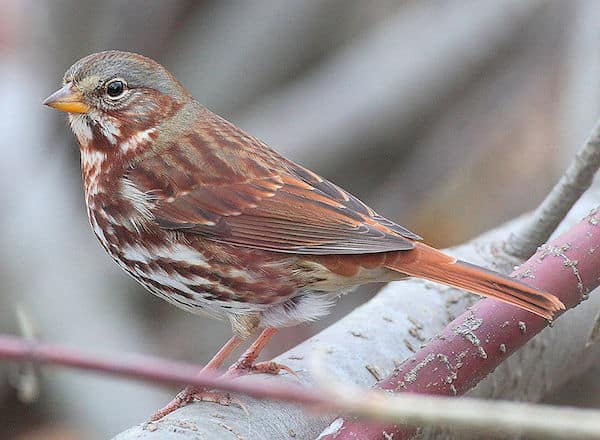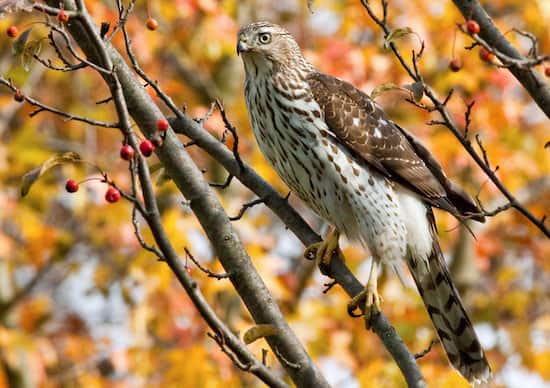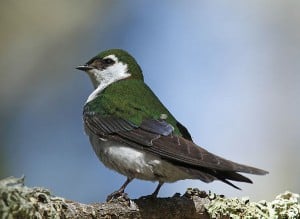Look For
The fox sparrow is 7 inches in length. This large, boldly marked bird is named for its fox red coloration, but not all fox sparrows are reddish— some western birds are dark brown or even gray. Sexes are similar, and coloration does not vary seasonally. Though similar in size, fox sparrows appear stockier than song sparrows. The fox red coloration is brighter than the song sparrow’s earth tones, and the breast of the fox sparrow is spotted with rusty brown (the song sparrow’s breast is streaked with brown).
Listen For
Fox sparrows have a beautiful song that starts with several sweet whistled notes, then a trill, and ends with a short warble: sweet-sweet, chee-chee-chee-tititititi-chew-wee! Call note is a loud chip! or smak!
Find It
Fox sparrows prefer to forage on the ground, often in dense, brushy cover, scratching for food like a towhee. They do not normally winter in flocks, but they will join other birds in a thicket or feeding below a bird feeder.
Feeding Behavior
A fox sparrow uncovers seeds and insects by grabbing leaf litter with its toes in a two-footed shuffle and kicking it back behind. You will also find them munching on a mixture of fruits and buds of plants during non-breeding season.
Nesting Behavior
The fox sparrow is not particular about its nesting location so it will nest in trees, bushes, or upturned stumps. The outer wall of the nest consists of small twigs, shredded or rotten wood, mosses, or strips of bark while the inner cup is lined with dead grass, rootlets, hair, feathers, and moss. Female fox sparrows lay about 3 eggs per brood and incubate for up to two weeks. After hatching, young fox sparrows fledge between 9 to 10 days.
Wow!
The various forms of the fox sparrow (red, gray, sooty, and large-billed forms) appear very different and may one day be split into separate species.
Listen to the fox sparrow:




